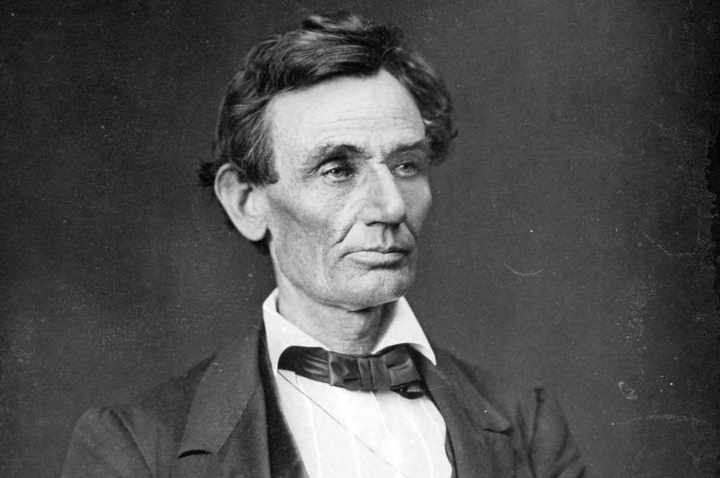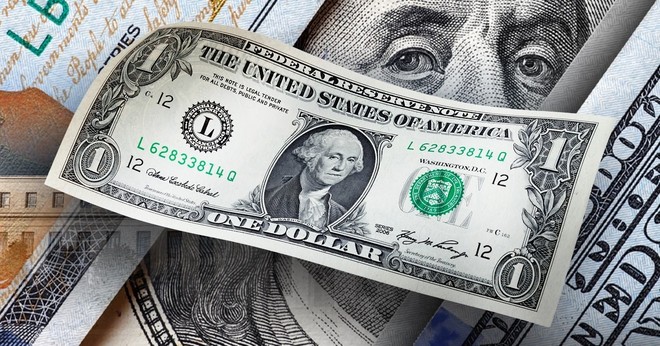Jefferson vs. Pinckney (1804)
Thomas Jefferson had reason to be confident as he headed into his 1804 re-election campaign. The young nation was prosperous and at peace, and Jefferson’s political opponents, the Federalists, were in disarray. Jefferson was bold enough to predict that his Democratic-Republican Party would lose only four states in 1804. In the end, they lost only two.
Jefferson ran on his record and won a landslide victory, winning 162 electoral votes to Pinckney’s 14, for a margin of victory of 84 percent.
The election of 1804 was the first election held after the ratification of the 12th Amendment, which changed the electoral process so that each voter cast two separate votes: one for president and one for vice president.
Lincoln vs. McClellan (1864)
The election of 1864 was held amid a backdrop of fighting, with only 25 states voting. The presidential race became a national referendum on the war, with incumbent Abraham Lincoln promising to continue fighting, and Democratic candidate George McClellan saying it was time to make peace with the Confederacy.
As a result, Lincoln won 212 electoral votes to McClellan’s 12, with a margin of victory of 81.6 percentage points.

Franklin D. Roosevelt vs. Alf Landon (1936)
Franklin D. Roosevelt.Franklin D. Roosevelt (FDR) was elected president four times, a record before the 22nd Amendment established term limits—and none of the races were very competitive. Even his smallest margin of victory in the Electoral College was 62.8 percentage points in 1944. His largest margin of victory—the largest in presidential history—came in 1936, when he won by 97 percentage points.
Roosevelt’s success was attributed to his political savvy. FDR was adept at reading the changing political winds. He was quick to switch sides on an issue when it began to become unpopular.
As America was still trying to climb out of the Great Depression, voters overwhelmingly supported FDR. Roosevelt won every state except Vermont and Maine, winning 523 electoral votes to Landon’s eight.
Reagan vs. Carter (1980)
The economic and political situation in 1980 was a stark contrast to that of 1964. In 1964, the economy was booming. In 1980, the nation was mired in a deep recession and 100 Americans were being held hostage in Iran. Voters were ready for change in the White House.
Ronald Reagan was no stranger to American voters in 1980. The candidate had first been elected governor of California in 1966 and had run the Republican primary against Gerald Ford in 1976. By 1980, Reagan had arguably become “the dominant figure of the American right.”
In the end, Reagan defeated Jimmy Carter by 81.8 percentage points, 489 electoral votes to 49.
Reagan vs. Mondale (1984)
In 1984, President Ronald Reagan’s re-election team ran a campaign ad called “Morning in America.”
The Democrats nominated Walter Mondale, who had served as vice president under Carter. Mondale chose Congresswoman Geraldine Ferraro as his running mate, the first woman to be nominated for president by a major party in the United States.
At the time, Reagan was 73 years old, the oldest person ever nominated for president. Mondale briefly put Reagan on the back foot after a poor debate performance. But ultimately Mondale’s campaign failed to present a compelling alternative to Reagan’s conservative vision.
Reagan improved on his impressive performance in 1980, completely crushing Mondale with 525 electoral votes to 13. In 1984, Reagan won every state except Minnesota and the District of Columbia by a margin of 95.2 percentage points.
Jefferson vs. Pinckney (1804)
Thomas Jefferson had reason to be confident as he headed into his 1804 re-election campaign. The young nation was prosperous and at peace, and Jefferson’s political opponents, the Federalists, were in disarray. Jefferson was bold enough to predict that his Democratic-Republican Party would lose only four states in 1804. In the end, they lost only two.
Jefferson ran on his record and won a landslide victory, winning 162 electoral votes to Pinckney’s 14, for a margin of victory of 84 percent.
The election of 1804 was the first election held after the ratification of the 12th Amendment, which changed the electoral process so that each voter cast two separate votes: one for president and one for vice president.
Lincoln vs. McClellan (1864)
The election of 1864 was held amid a backdrop of fighting, with only 25 states voting. The presidential race became a national referendum on the war, with incumbent Abraham Lincoln promising to continue fighting, and Democratic candidate George McClellan saying it was time to make peace with the Confederacy.
As a result, Lincoln won 212 electoral votes to McClellan’s 12, with a margin of victory of 81.6 percentage points.

Franklin D. Roosevelt vs. Alf Landon (1936)
Franklin D. Roosevelt.Franklin D. Roosevelt (FDR) was elected president four times, a record before the 22nd Amendment established term limits—and none of the races were very competitive. Even his smallest margin of victory in the Electoral College was 62.8 percentage points in 1944. His largest margin of victory—the largest in presidential history—came in 1936, when he won by 97 percentage points.
Roosevelt’s success was attributed to his political savvy. FDR was adept at reading the changing political winds. He was quick to switch sides on an issue when it began to become unpopular.
As America was still trying to climb out of the Great Depression, voters overwhelmingly supported FDR. Roosevelt won every state except Vermont and Maine, winning 523 electoral votes to Landon’s eight.
Reagan vs. Carter (1980)
The economic and political situation in 1980 was a stark contrast to that of 1964. In 1964, the economy was booming. In 1980, the nation was mired in a deep recession and 100 Americans were being held hostage in Iran. Voters were ready for change in the White House.
Ronald Reagan was no stranger to American voters in 1980. The candidate had first been elected governor of California in 1966 and had run the Republican primary against Gerald Ford in 1976. By 1980, Reagan had arguably become “the dominant figure of the American right.”
In the end, Reagan defeated Jimmy Carter by 81.8 percentage points, 489 electoral votes to 49.
Reagan vs. Mondale (1984)
In 1984, President Ronald Reagan’s re-election team ran a campaign ad called “Morning in America.”
The Democrats nominated Walter Mondale, who had served as vice president under Carter. Mondale chose Congresswoman Geraldine Ferraro as his running mate, the first woman to be nominated for president by a major party in the United States.
At the time, Reagan was 73 years old, the oldest person ever nominated for president. Mondale briefly put Reagan on the back foot after a poor debate performance. But ultimately Mondale’s campaign failed to present a compelling alternative to Reagan’s conservative vision.
Reagan improved on his impressive performance in 1980, completely crushing Mondale with 525 electoral votes to 13. In 1984, Reagan won every state except Minnesota and the District of Columbia by a margin of 95.2 percentage points.



